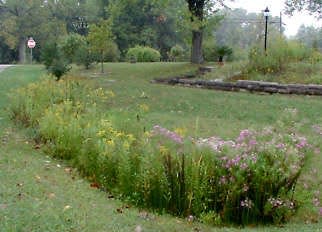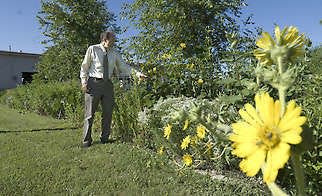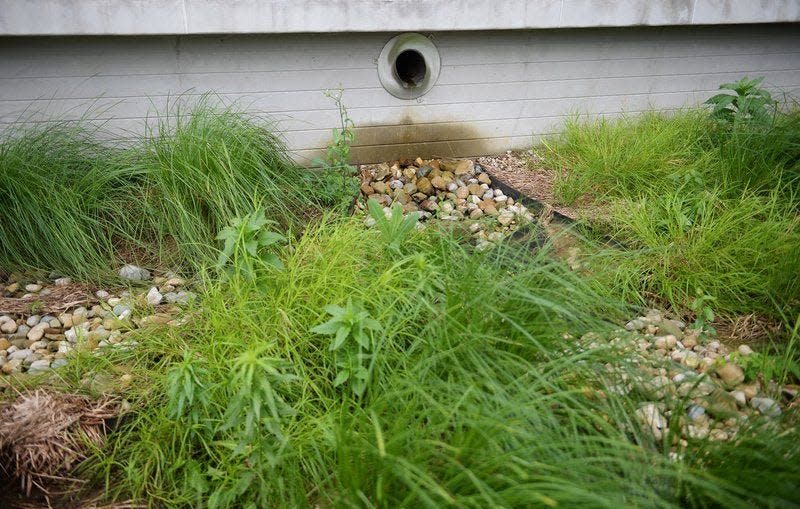Rain garden adds beauty while helping curb flooding, pollution
I know it’s dry now, but the rains will be here soon. Let’s get ready for the deluge season by installing a rain garden.
What’s a rain garden? A rain garden is a planting bed in a strategic location to capture stormwater runoff before it leaves your property and gets to the storm drain. The bed is dug down several inches to create a low area for the rain to collect and be absorbed by the soil. The bed is planted with things that can take both wet and dry conditions and then mulched.
There are great reasons to install a rain garden. Stormwater runoff that flows from your downspouts has grit from shingles, organic material and whatever else was on your roof. After that water hits your grass, but before it gets to the storm drain, it picks up excess fertilizer, chemicals, pet waste and whatever else is on your lawn.

Northwest Florida: Pensacola OKs $6.9M for Bruce Beach upgrades including plaza, learning garden, play area
The deposit of these materials into the storm drain that empties into the nearest creek or stream is called nonpoint source pollution. It’s a big deal, too. Studies cited in the Florida Nonpoint Source Program Update by the Florida Department of Environmental Protection showed nonpoint source pollution was responsible for more than half of the total pollution load entering Florida’s surface waters and over 75% of the loading to lakes. That means that what we all do in our yards really adds up.
Here are a few more reasons to have a rain garden. The water kept on your property reduces urban flooding, which is a huge issue in parts of the city. Also, the water filtered through your rain garden helps recharge the aquifer. And the plants in the bed can provide habitat for insects and other critters.

There are some things to know about how to construct these gardens. First, the bed should be placed in full sun at least 10 feet away from your house. You can use a low spot that already exists if it usually drains quickly after a heavy rain. Don’t put a rain garden within 25 feet of a septic tank or well.
You can get very precise as far as how large and how deep your rain garden should be. The depth depends on the slope of the site. If you have a slope of 4% or less, the garden should be 3-5 inches deep. Slopes between 5% and 7% need a rain garden depth of 6-7 inches. Beds should be dug 8 inches deep for areas with 8% to 12% slope.
To figure out your slope, pound a stake at the uphill end of your rain garden site, and one at the downhill end. Tie a string to the bottom of the uphill stake at the ground and stretch it to the downhill stake. Tie it far enough up the downhill stake so that the string is level. Use a carpenter’s level to make sure the string is horizontal. Now measure in inches the length of the string and the height off the ground where the downhill stake is tied. Divide the height by the distance and multiply the result by 100. This will give you the percentage of slope.
Recently: Northwest Florida rebuilds after every hurricane. But are we rebuilding in right places?
More: FPL, Duke Energy and Tampa Electric seeks approval for millions to bolster against storms
For how large to make the bed, that depends on the size of the roof area that drains to the downspout closest to the garden, how close the bed is to the downspout, how deep your bed will be and what soil type you have. This is the type of weekend project that a retired engineer could really sink their teeth into!
If you want your bed built optimally, there are several publications online that explain the needed calculations. They are not difficult to do, but for the sake of brevity, I won’t try to describe them here. Just enter “rain garden design IFAS” into your favorite search engine for more math. Please know that an imperfect rain garden is much better than no rain garden at all. In general, the garden should be dug no more than 8 inches deep and be 100-300 square feet in size. If you eyeball it, I won’t tell anyone.
Before you start digging, be sure to call Sunshine State One Call, 811, to get the underground utilities marked for free. To construct the bed, start at the uphill end and dig down until you reach your desired depth. Keep working your way digging across the bed area. The bottom of the bed should be flat when you are finished. Some of the excess soil that you dug from the uphill side is used to make a berm on the downhill side to keep the water in the mini retention pond you just made.
Now it’s time for fun.

Choose a variety of plants and mix up the heights, textures, shapes, and colors. African iris, canna lily, goldenrod, milkweed and swamp sunflower are all good picks for flowers. Gamma grass, muhly grass and wiregrass can add a lot of interest mixed in with them. Next, use a large chip hardwood mulch spread 2 or 3 inches deep. Finally, to make the bed look neat and purposeful, use a piece of garden decoration such as a boulder, a bench, or a sculpture. Keep your plants watered until they are established, and the rains start to come.
There are so many things we can do to protect our beloved waterways. Proper fertilization, installing rain barrels, using permeable pavers and rain gardens. If we all do one thing differently, think about what a result we could get!
Tonya Ashworth is an extension agent and environmental horticulture and Master Gardener coordinator with the Duval County Extension Office.
This article originally appeared on Pensacola News Journal: Rain garden adds beauty while helping curb flooding, pollution in NWFL

